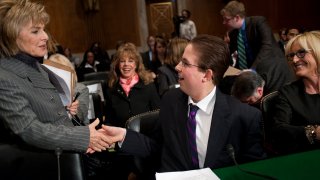
Federal legislation meant to help track and investigate suspected cancer clusters has not done either since it went into effect five years ago, environmental health advocates, politicians and the law's namesake say.
And while federal health agencies have been largely consumed over the past 18 months by the pandemic, supporters of "Trevor's Law" say the urgency never receded in communities where potentially hazardous environmental conditions have lingered and require a comprehensive response, particularly when cases of unexplained childhood cancers are involved.
Since 2016, when President Barack Obama signed the updated legislation that "Trevor's Law" falls under — reforming the Toxic Substances Control Act of 1976 — there have been no new guidelines on how to respond to possible cancer clusters and no investigations on the federal level as a result. The law is also supposed to make it easier for state and local officials to coordinate with the federal government, said Trevor Schaefer, an Idaho native who inspired the law after he survived childhood brain cancer in 2002 at age 13.
About 1,000 suspected cancer clusters are reported to state health departments each year, according to the American Cancer Society. However, studying them is challenging, with results often inconclusive or failing to meet the right criteria to satisfy health agencies’ standards. People may speculate the environment is linked to an apparent rise in cancers, but epidemiologists say it’s rare to confirm a causal relationship.
Get a weekly recap of the latest San Francisco Bay Area housing news. Sign up for NBC Bay Area’s Housing Deconstructed newsletter.

